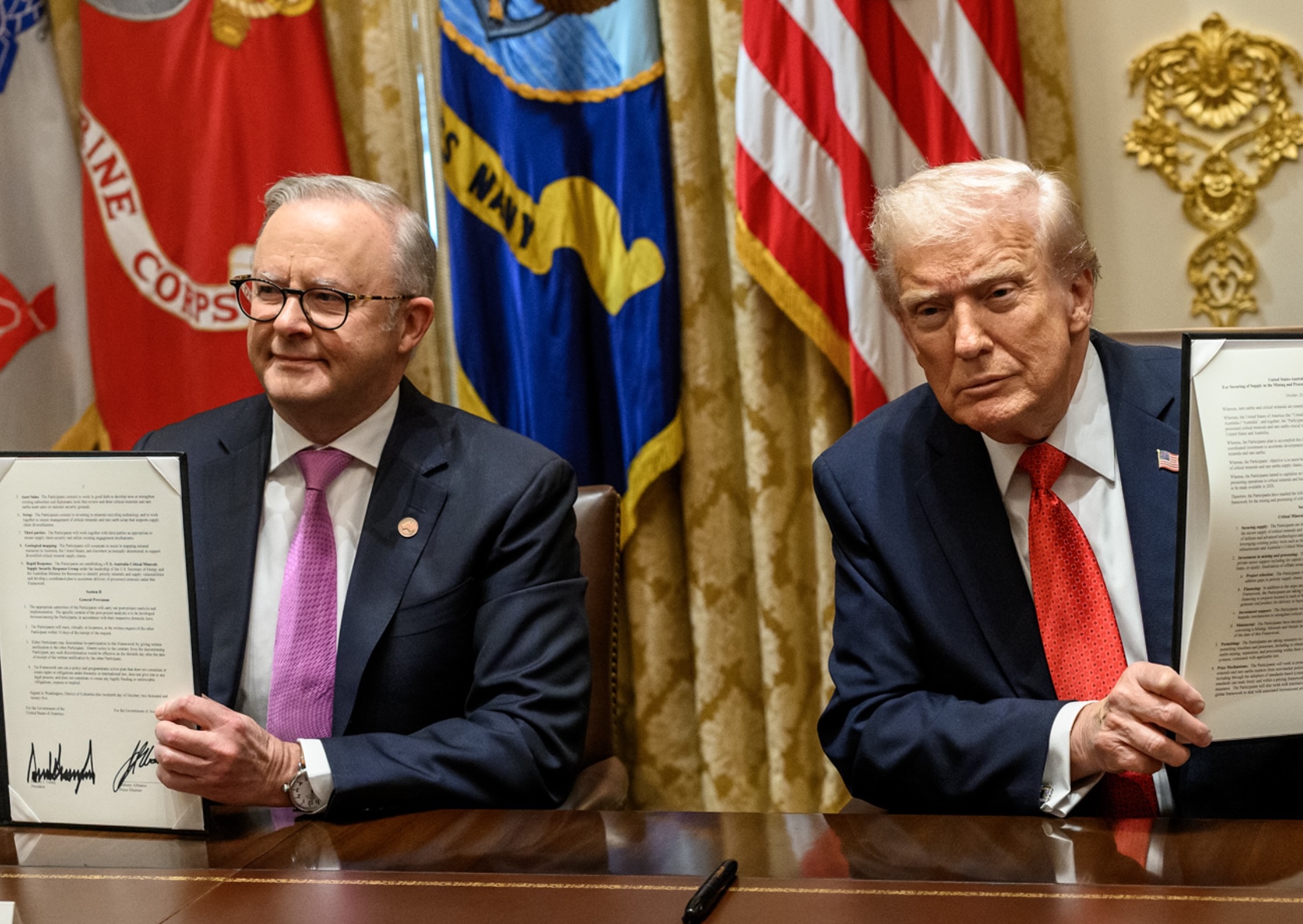Already a subscriber? Make sure to log into your account before viewing this content. You can access your account by hitting the “login” button on the top right corner. Still unable to see the content after signing in? Make sure your card on file is up-to-date.
The United States and Australia have inked a landmark agreement to strengthen their partnership on rare earths and critical minerals amid China’s monopolization of refining capacity related to rare earths.
Some shit you should know before you dig in: If you’re unaware, many Western countries have been sounding the alarm over China’s near-monopoly on rare earth elements, a group of 17 metals essential for modern technology and defense systems. China controls roughly 70% of the world’s rare earth mining and nearly 90% of global refining and processing capacity, giving it significant leverage over supply chains for materials used in vehicles, smartphones, semiconductors, wind turbines, and advanced military equipment. In recent months, China has weaponized its dominance by imposing export controls and licensing requirements on rare earths and related technologies, effectively restricting access to these materials for foreign manufacturers. The United States, Japan, and Australia have expressed growing concern that such measures could be used as geopolitical tools to pressure rival economies and disrupt global technological development.

What’s going on now: In a notable development, President Trump and Australian Prime Minister Anthony Albanese signed a critical minerals agreement at the White House intended to bolster joint capabilities in rare earths mining, processing, and supply chain development. The deal comes as a direct response to China’s tightening grip on global rare earth exports. Albanese described the agreement as taking the US-Australia relationship “to the next level,” while Trump said it would ensure that “in about a year from now, we’ll have so much critical mineral and rare earth that you won’t know what to do with them.”
Under the terms of the agreement, Australia and the United States will each invest $1 billion over the next six months, with the potential total value of projects reaching up to $8.5 billion, according to Albanese. However, a White House factsheet later clarified that the immediate joint investment will exceed $3 billion, including $2.2 billion in financing facilitated by the US Export-Import Bank, which is expected to unlock up to $5 billion in total project value. The deal includes US investments in rare earth processing facilities in Australia, helping to build domestic and allied supply chains independent of China.
One of the most significant projects under the agreement is the planned construction of a gallium refinery in Western Australia, which will have a capacity of 100 metric tons per year. Gallium is a critical component in semiconductors and military radar systems. This project is part of a larger trilateral venture between the US, Australia, and Japan aimed at fortifying allied capabilities in high-tech material production. Albanese emphasized that “there are projects that are immediately available” and highlighted Australia’s willingness to sell shares in its strategic reserve of critical minerals to allies.
There’s been no comment from China.







